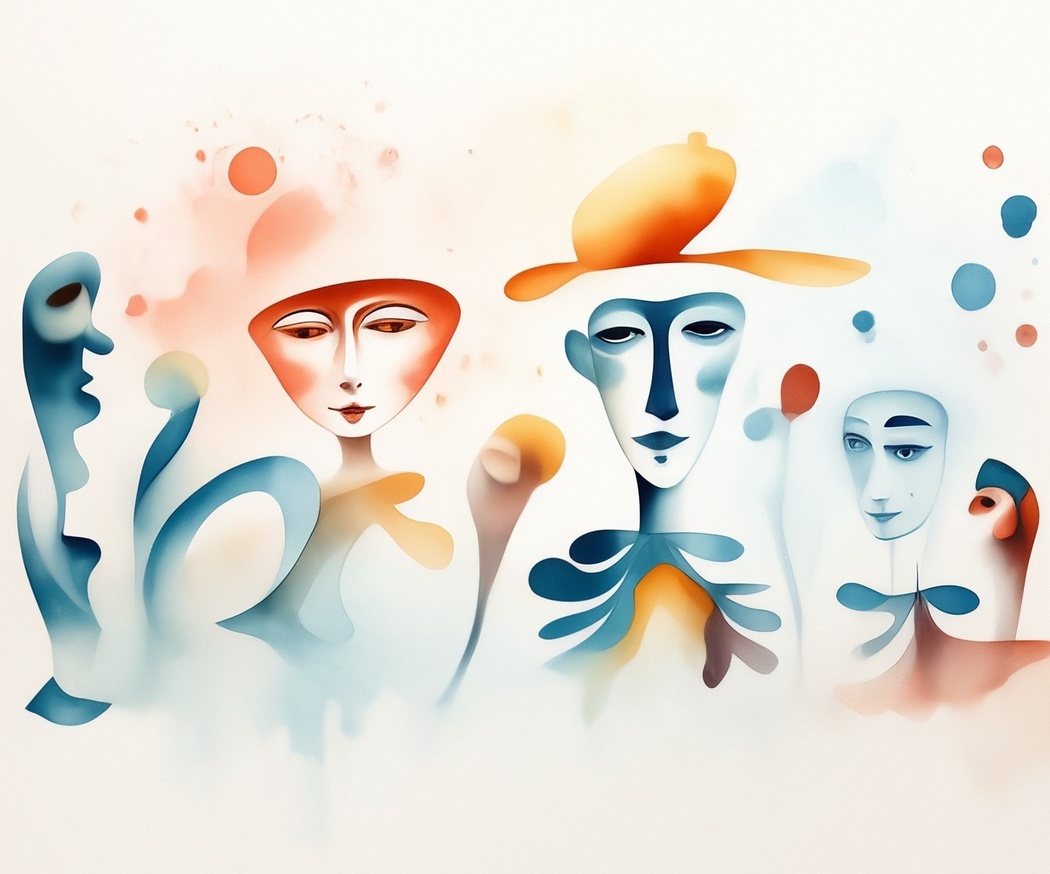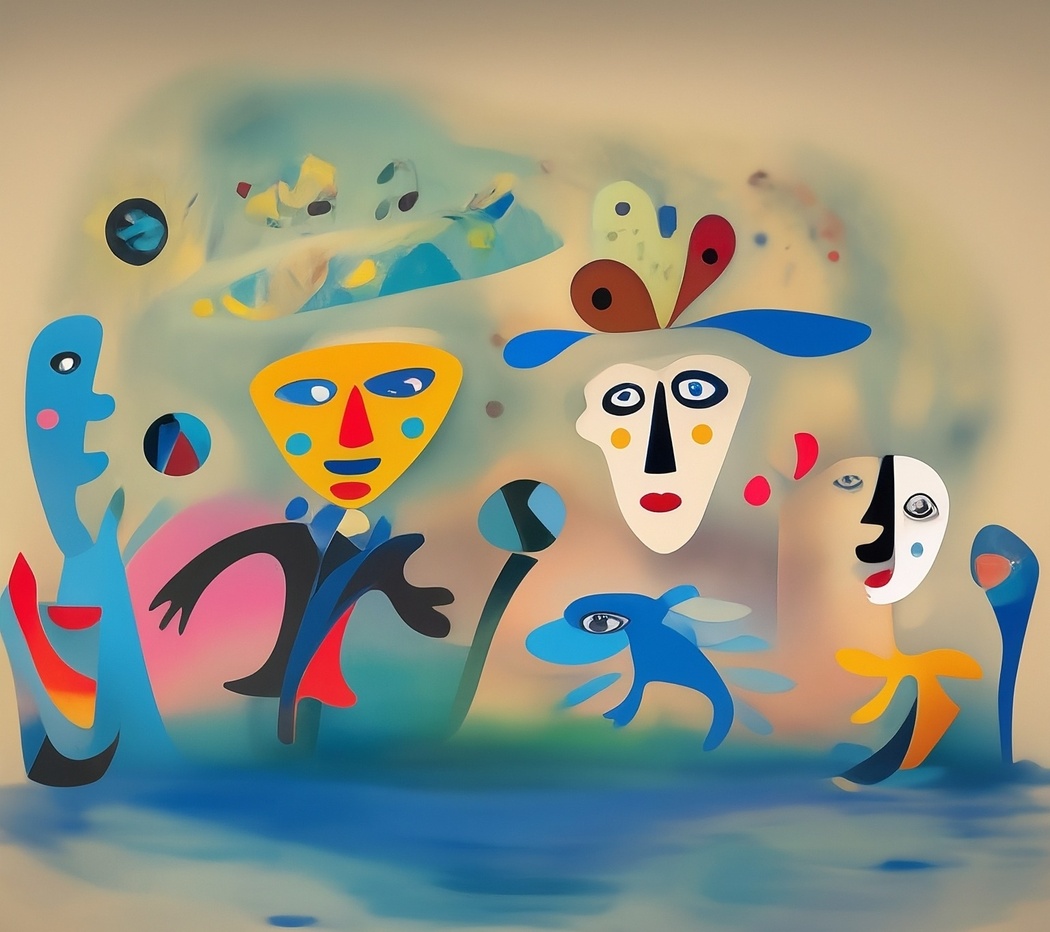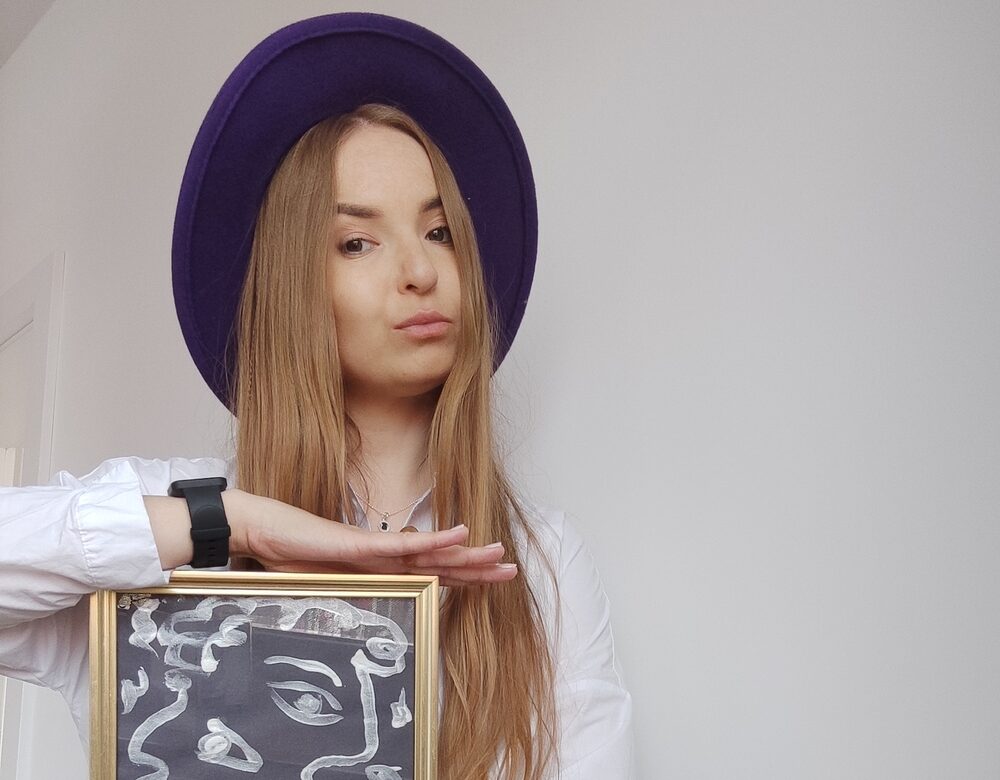Marika Kołonowicz
Where do you live: Gdańsk/Warszawa/Poland.
Your education: Higher education.
Describe your art in three words: Autentyczność, Historia, Przyszłość.
Your discipline: Designers/Artist.
Instagram
Your art often involves creating faces using the lineart technique. How did you first discover this method, and what draws you to it?
My adventure with lineart began quite unexpectedly, with simple prints on t-shirts and ceramics that caught my eye. The real breakthrough came when I discovered the inspiring works of Artist KOKETIT – Shira Barzilay on Instagram. What she created literally enchanted me! Pinterest opened the world of lineart projects to me and I thought: “Why not try?”. It turned out to be the beginning of a fascinating journey. From hundreds of sketches of faces, eyes and silhouettes, through paintings, to creating unique jewelry with facial motifs. What I love about lineart is the magic of creating something absolutely one of a kind. This is the moment when a white sheet of paper and a black marker become partners in a creative dance.
You work with various surfaces like canvas, sand, and photographs. What influences your choice of surface for each piece?
The surface on which I work is not only the background, but also the co-author of my works. For me, the decision to choose the surface is a kind of dialogue with the material. The canvas invites you to apply layers of paint, to build a composition in a traditional way, giving you a sense of solidity. Working with sand is a completely different experience – its looseness and texture provoke experiments with form and light, creating works of unique, almost sculptural quality. On the other hand, I treat photographs as a ready fragment of reality that I can transform, add my own interpretation to it, discover new meanings by interfering with its structure or context. The story I want to tell and the emotions I want to evoke largely determine the choice of “ground”.

The simplicity and elegance of your designs are striking. Do you see your line art as a form of minimalism, or is there a deeper narrative you’re aiming to convey through these pieces?
Although the simplicity and elegance of my lineart designs may suggest minimalism, I see them as more than just a form of economy. For me, it is more about the essence, extracting the essence of the motif being presented. Each line has its own meaning and contributes to telling a story or capturing an emotion. Minimalism is one tool, but the goal is a deeper narrative, subtle but expressive, that resonates with the viewer.
Could you tell us about your project Art_Manialineas and what it represents for you as an artist?
The Art_Manialineas project is more than a collection of paintings. It is a philosophy of looking at the world, discovering hidden narratives in seemingly ordinary lines and shapes. The name itself is the key to this idea. It conceals a tender memory of my great-grandmother Maria, diminutively called Mania. It is a tribute to the past, to the roots that lie in every, even the smallest creative gesture. I believe that behind every creation there is a personal story waiting to be discovered.
The impulse to make Art_Manialineas public was born in the unusual times of pandemic isolation. Instagram became a window through which I could share my unique perspective with others. What I create is not a figment of imagination. It is an attempt to capture the natural “sketches” that are constantly being created around us – on the bark of trees, in the folds of fabrics, in random arrangements of objects. You just need to slow down for a moment, sharpen your senses, to notice this subtle language of lines that tell their own stories.
My role is to notice these ephemeral traces, expose them, give them a new perspective. It is not just painting or drawing – it is a dialogue with the surrounding reality, an attempt to understand its internal rhythm and beauty, which often escapes in the daily rush.
I feel that this is just the beginning of my journey. Energy and ideas are buzzing in me, and each new work is another step in discovering the endless possibilities that simple lines hide. I believe that the voice of Art_Manialineas will resound stronger and stronger, inspiring others to look at the world more carefully and find their own, unique stories in it.
The Art_Manialineas project has had several smaller and larger successes: several exhibitions, including: exhibition of graphics at the Royal Rifle Factory in Gdańsk/Poland (2017), at the “House of Culture” of the Janowo Housing Cooperative in Rumia (2019), Internet exhibition (2019), exhibition of performance works at the Imperial Shipyard in Gdańsk/Poland (2022), participation in the collective exhibition “El Largo Camino Del Papel” in Lima/Peru (2023), participation in the collective exhibition “El Lenguaje del pincel” in Galerii Martin Yepez Lima/Peru, guest participation in the opening of the “Spring Exhibition Salon” (2024), participation in the exhibition “Źródła” at the Military Club of the 44th Naval Aviation Base in Siemirowice/Poland (2024), post-plein-air exhibition “OBOK” (2024), exhibition “Uncontrolled Sensitive Area” Słupsk/Poland.
Art_Manialineas – to również publikacje m.in. Zbiór Ekspresji i Twórczości (2022), Kalendarz (2022), “Międzypokoleniowe przestrzenie w naszym życiu” M.Grochowskiej (2023r.), Trenbook (22’/23’/24′), Magazyn New York PINK (25′).
I am happy to announce a new chapter in my work! Soon my unique lines and patterns will come to life on stylish clothes and in original jewelry, thanks to cooperation with MariKoDESIGN.pl.
I invite you to follow our Instagram profiles: @art_manialineas and @marikodesignpl to stay up to date with upcoming collections and surprises that we are preparing for you. Be ready for a combination of art and design in a completely new version!

Can you talk about the significance of painted faces in your art? What do these faces mean to you and how do they connect with the audience?
Painted faces are a window into the world of human interactions and emotions for me. It is an attempt to capture the subtlety of relationships, from those close and full of warmth, to those marked by distance or even conflict. Through their diversity, I want to present the richness of the spectrum of human experiences – joy, sadness, surprise, contemplation. These faces are a record of moments, conversations, glances that shape our everyday lives. They are not portraits of specific people, but rather archetypes of human attitudes and feelings. They are a visual representation of the dynamics of our contacts, reminding us of the people who appear in our history – some for a moment, others for longer, and some for a lifetime. In fact, these painted faces are all of us, in different stages of our relationships and with different emotional baggage. They are meant to provoke reflection on our own interactions, on how we build bonds, how we communicate, how we influence each other. I believe that in these universal representations of human faces, the viewer can find a part of themselves, their experiences and relationships with others. It is an attempt to create a visual language that transcends the barriers of individual stories and touches on the common denominator of our humanity.
Your work has been described as thought-provoking. Do you intentionally try to provoke deep reflection in your viewers or is this a natural outcome of your creative process?
I see my work primarily as an open platform for dialogue with the viewer. It is not about dictating interpretations or imposing the only correct view on a given topic. My goal is rather to initiate a certain type of intellectual and emotional exchange. Through my works, I try to subtly ask questions, touch upon issues that I feel have the potential to resonate with the viewer’s inner world. If this form of artistic communication leads to deeper reflection, to stopping and thinking about the issues I raise, then I feel that I have managed to establish a valuable thread of understanding. Therefore, it is not a purely intentional action in the sense of “provoking” for the sake of provoking. It is rather an invitation to a joint journey of thought, to explore different perspectives and discover our own answers to the universal questions that life and the reality around us pose to us. I believe that art in its essence should inspire thinking, and not just provide ready-made conclusions.
Your exhibitions have spanned various countries, from Poland to Peru. How do different cultural contexts influence the way you present your work?
Exhibiting my work in different countries, from Poland to Peru, makes me realize how deeply culture shapes the perception of art. The cultural context not only influences the interpretation of my works, but also the way they are displayed and received. I try to be a careful observer of these differences and adapt the presentation to create a space for authentic dialogue with the local audience, respecting their traditions and values.


Leave a Reply